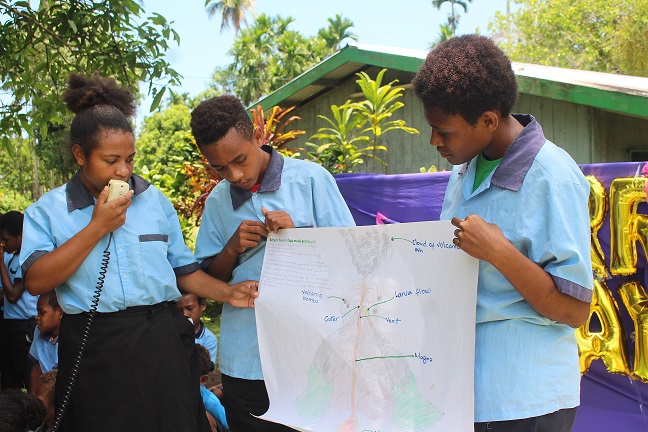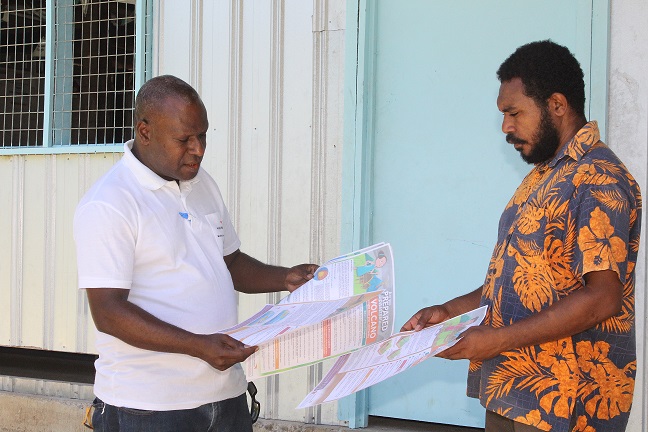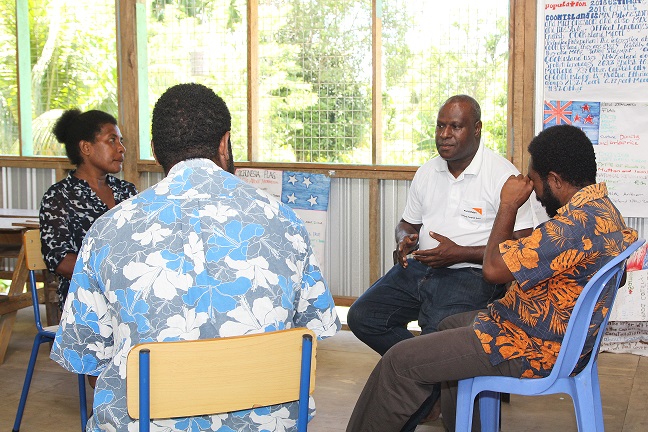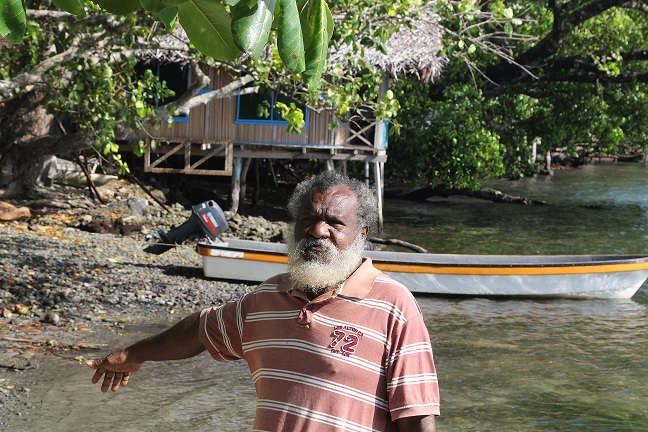Students in Madang learn about disaster preparedness
"One thing that we have learned through this project is that in the event of an earthquake we must drop down, crawl under a sturdy desk or table and cover our head and wait if we are in the classroom,” says Lucy.
Lucy is proud of what she has learnt through World Vision's Madang Child Focus Risk Reduction (CFDRR) project and is always excited to share the new disaster preparedness knowledge with her family and friends in her community.

The sixteen-year-old attends Riwo SDA Primary School and is part of her school's Disaster Risk Reduction (DRR) club under the project.
"In the past when we had an earthquake our teachers usually tell us to run out of our classrooms as fast as we could. When we did that, at times we would to hurt ourselves by bumping into each other or bumping into nearby objects,” says Lucy.
She adds they also learnt about the signs of a coming tsunami which is important because they live near the sea and their school is also located about a hundred meters from the beach.
"We learned that when a tsunami strikes, the epicentre of the earthquake will come from the sea. The signs of a tsunami will be an unusual withdrawing of seawater into the deep ocean after an earthquake happens.
"When we see this sign, we have to warn members of our community, and we all have to run to the nearest high ground for safety and wait there until we receive an announcement from authorities that it is safe to return to our communities,” she adds.
Lucy says that as soon as she learned about disaster preparedness, she shared the information with her family members.
"My father asked me where did I learn about disasters. I told him that I learnt it by reading fact sheets on different types of disasters and their signs produced by World Vision project staff who conducted awareness on disaster preparedness at our school," shares Lucy.

The CFDRR project is funded by Australian Aid through the Australian Humanitarian Partnership (AHP) program and is being implemented in 10 schools in three districts of Madang Province from 2019 to 2022.
"The main goal of the project is to build the capacity of school children and teachers to prepare for, cope with, response to and recover from slow and rapid onset disasters in their local context," says Michael Ngond, World Vision PNG's Humanitarian Emergency Affairs (HEA) Manager.

He says that in 2019, school children and teachers in the target schools gained knowledge on how they can prepare for slow and fast types of disasters. They learned about developing school disaster preparedness plans, conducting training on how to respond during earthquakes, tsunamis, cyclones, volcanic eruptions, flooding and droughts.
"Through these capacity-building activities students and teachers have been empowered to prepare themselves, their families and communities for any future disaster events,” Mr Ngond says.
He adds, "Many of these children have demonstrated a keen interest to advocate for the members of their community to see and understand the need for disaster preparedness.”
Students, like Lucy, who are part of their school's DRR club are given posters, short videos and pamphlets by our project staff to carry out awareness in their communities.
"Children and people living with a disability are the most vulnerable in the community. Therefore, it is important to impart DRR and Climate Change Adaptation and Mitigation knowledge to students and children in local communities to improve their knowledge of disaster events", says Wesley Tringin, The Project Coordinator.
He adds that community members and children need to be able to identify risks in their schools and communities to plan collectively.
"This will build resilient communities who can respond positively to natural shocks and extreme weather events due to climate change," he says.
Kamas Sapom, a community leader in Riwo says that his community has an estimated population of six thousand people whose lives have been greatly affected by climate change.

As a community that lives by the sea, Mr Sapom says their main livelihood, which is fishing and gardening have been affected, making life difficult.
He adds that children have also been affected by rising sea levels.
“Children often have swollen ears which turn red and also get different types of rashes from a poisonous seaweed that rising sea levels bring to our shoreline”, he says.
World Vision and its partners in the CFDRR project aim to improve inclusive school and community-level disaster preparedness and response to slow (drought) and fast onset (tsunami, landslides, floods, volcanic eruptions and earthquakes) in disaster-prone areas of the province through active community engagement.
Mr Sapom shares, "In our community, no one comes and talks to us about disaster preparedness, I'm grateful that World Vision has come so we can sit together, discuss and share ideas that will help my community. With your help, we can be better prepared for disaster."
World Vision and its partners in the CFDRR project aim to improve inclusive school and community-level disaster preparedness and response to drought, tsunami, landslides, floods, volcanic eruptions and earthquakes, in disaster-prone areas of the province through active community engagement.
Through the project, we are working with a total of 5,067 girls and boys to advocate on inclusive planning highlighting the rights of women, people with disabilities, youth and children in the selected schools and communities.